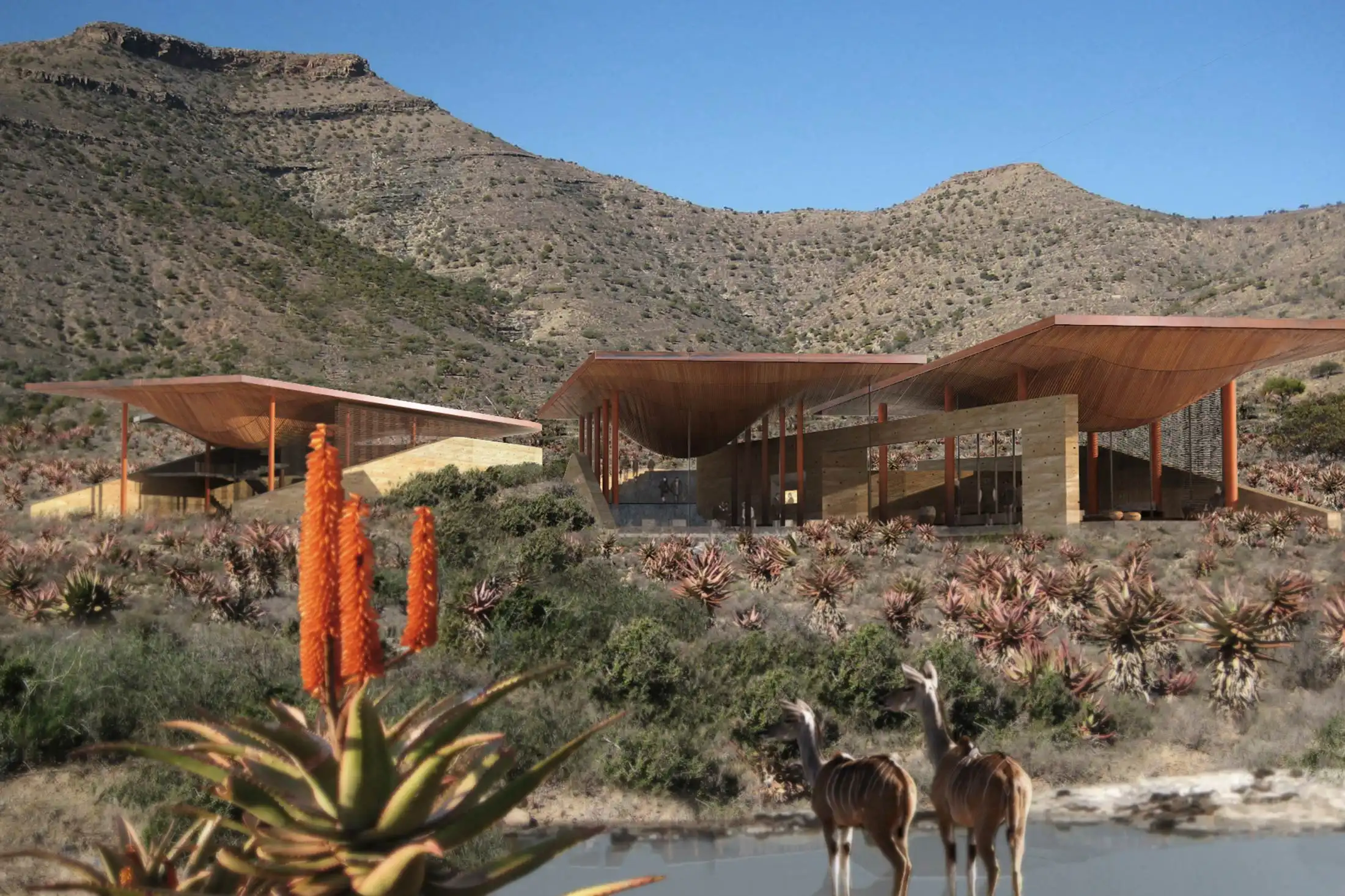
Desert architecture has been a prominent avenue toward a sustainable design practice as climate change and rapid urbanization have become global phenomena. Desert climates are typically dry and hot and have very limited water resources, which pose enormous challenges for architects and planners. These challenges can be turned into opportunities through innovation in developing ecologically friendly solutions that harmonize with nature. Thus, desert architecture, more than simply necessity, is also the signature of the adaptiveness and cleverness of sustainable design principles.
Desert architecture has made significant progress, although there are some challenges. These include a severe climate, a little amount of resources, and expensive initial investments for sustainable technologies. But these challenges can also serve as opportunities for more innovations to come. Advances in materials science, renewable energy sources, and water conservation technologies promise to shape the future and make this sustainable desert architecture even more accessible and affordable.
This article discusses critical aspects of desert architecture, analyzing design strategies such as cool roofs, water-saving technologies, local materials, and so on. And it showcases five sustainable projects that have redefined architectural practices in arid areas.
Key Elements of Sustainable Desert Architecture
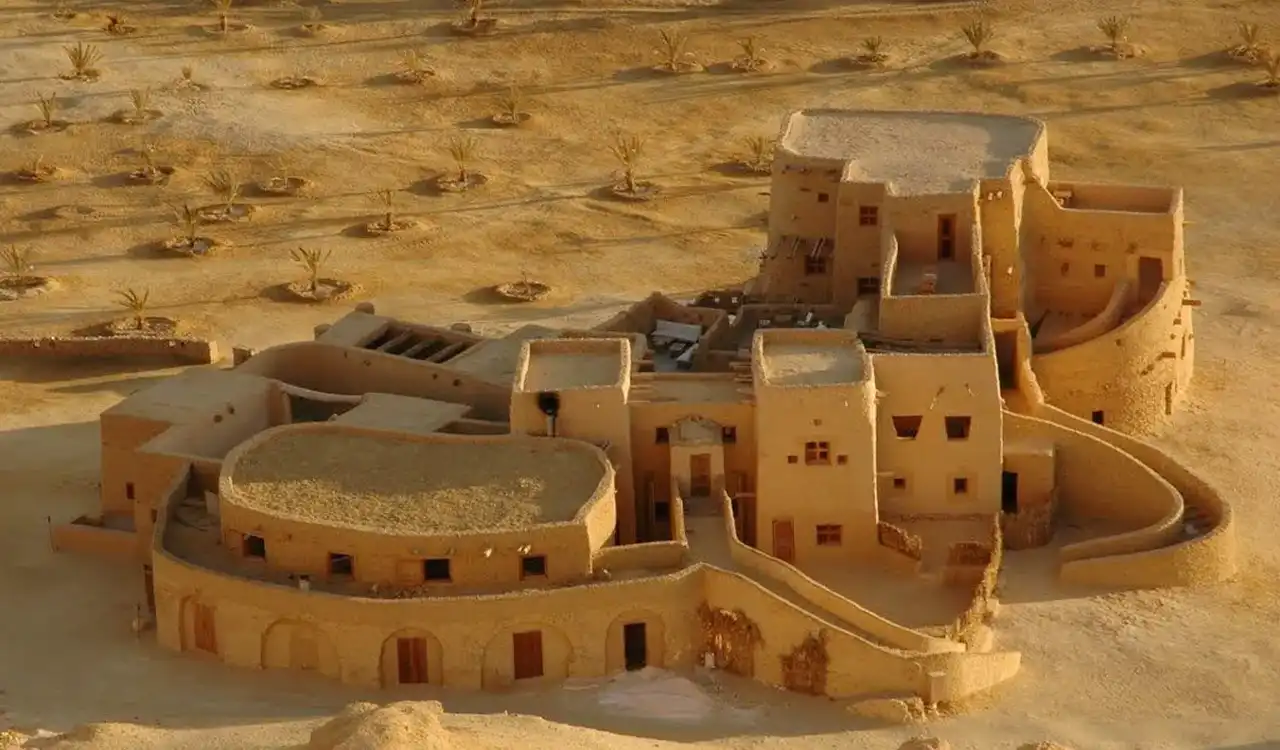
Sustainability in desert architecture is found at the crossroads of tradition and technology. By taking cues from the traditional architectural practices and changes brought about by the innovations, the architects are able to build shelters in which human beings can live, inhabiting in consonance with the environment. Key elements in desert sustainable architecture are:
Cool Roofs and Passive Cooling Strategies: Cool roofs are designed to reflect sunlight while absorbing less heat, resulting in lower indoor temperatures and significant energy savings. Passive cooling strategies, which include building orientation, optimized ventilation systems, and thermal mass materials, play a vital role in assuring comfort in desert climates. Courtyards, wind towers, and shaded walkways are some traditional yet effective methods that have found their way into modern designs.
Water-Saving Technologies: Conservation of water in deserts makes it imperative to adopt innovative technologies. The sustainable design incorporates techniques such as grey water recycling, rainwater harvesting, and drip irrigation systems. Also, high-end techniques such as fog harvesting and atmospheric water generators are emerging as alternatives for providing fresh water in jurisdictions that lack conventional water resources.
Use of Local and Sustainable Materials: Using locally sourced materials reduces transportation expenses while also making the building more in sync with its environment. Adobe, rammed earth, and stone are the most commonly utilized materials in desert construction due to their thermal insulation properties. The modern innovation has included recycled and upcycled materials, adding another dimension to sustainability in the building design.
Integration of Renewable Energy: Indeed, desert areas are the richest reserves of solar energy; hence, solar energy should form the basis for sustainable architecture in the desert. Photovoltaic panels and solar water heating systems have been built into the building to reduce dependence on non-renewable sources. Wind energy and geothermal cooling systems have also been included in energy efficiency programs.
Landscape Design and Biodiversity: Landscaping in desert architecture goes beyond mere beauty and serves a functional purpose. Xeriscaping is the term used for drought-resistant plants that are incorporated into landscaping practices. With xeriscaping, the amount of water consumed becomes less and encourages biodiversity. It also provides soil and prevents erosion while shading to create microclimates favorable to humans.
Sustainable Projects in Desert Architecture
These five projects exhibit sustainable desert architecture.
The Desert House
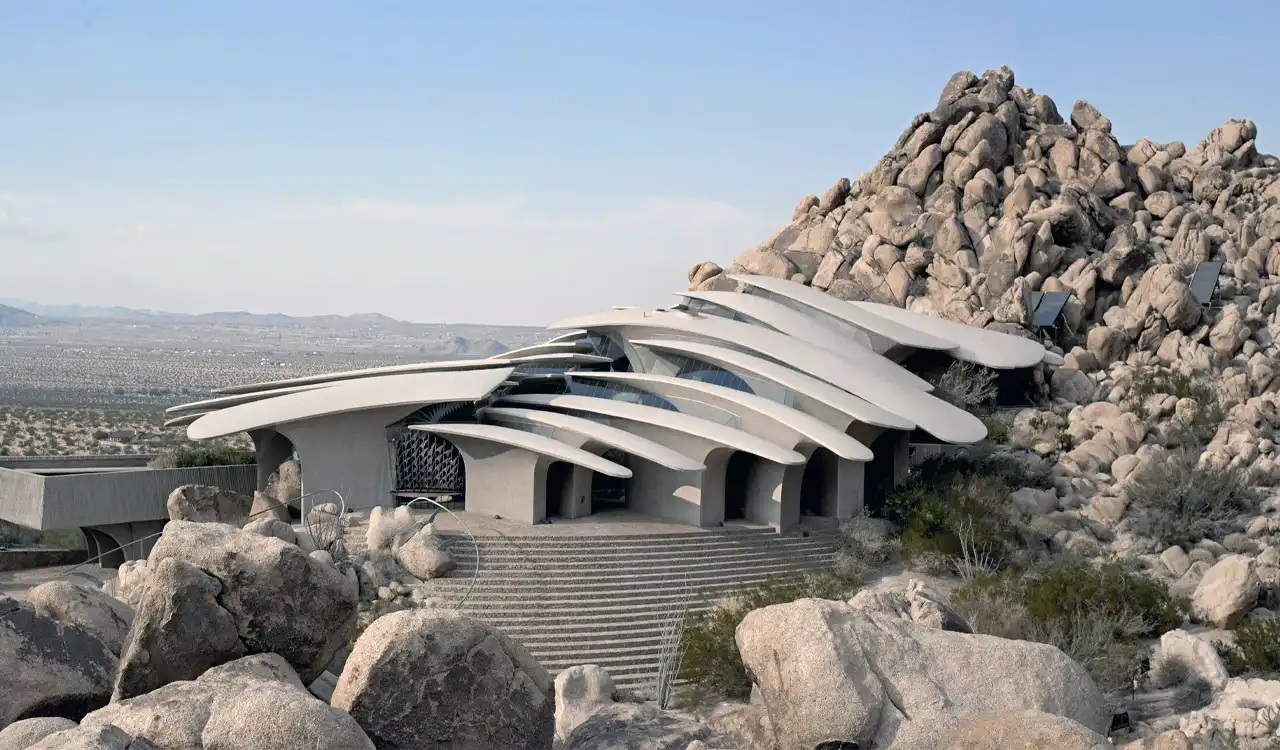
Architect/Designer: Kendrick Bangs Kellogg
Location: California, United States
Year: 1993
The Desert House, designed by Kendrick Bangs Kellogg, displays the utmost progressive vision of desert architecture. Located in Joshua Tree, California, the house is part of its rocky context and provides an organic form to nature-inspired shapes. Its curvilinear concrete with steel elements offers thermal mass to retain the indoor comfort in the harshest desert conditions. Skylights and holes at strategic points allow sunlight to come in with lesser consumption of energy. This architectural achievement makes perfect harmony with its arid surroundings and demonstrates how principles of sustainability artistically blend with one-of-a-kind aesthetics to build functional and ecological living spaces.
Ayla Golf Club

Architect/Designer: Oppenheim Architecture
Location: Aqaba, Jordan
Year: 2018
Ayla Golf Club is an excellent example of sustainable desert design. The clubhouse is completely integrated with the surrounding dry nature, borrowing inspiration from the adjacent dunes. The undulating concrete shell resembles natural shape, provides shade, and thermal insulation while reducing environmental effect. The building makes use of energy-efficient systems and locally sourced materials, making its construction sustainable. The design fits in its desert environment harmoniously and provides a retreat for golf enthusiasts while respecting the delicate ecosystem. Ayla Golf Club is an exquisite example of how even the finest design in luxury and function can produce environmental stewardship.
Mysk Al Badayer Retreat, Desert Camp
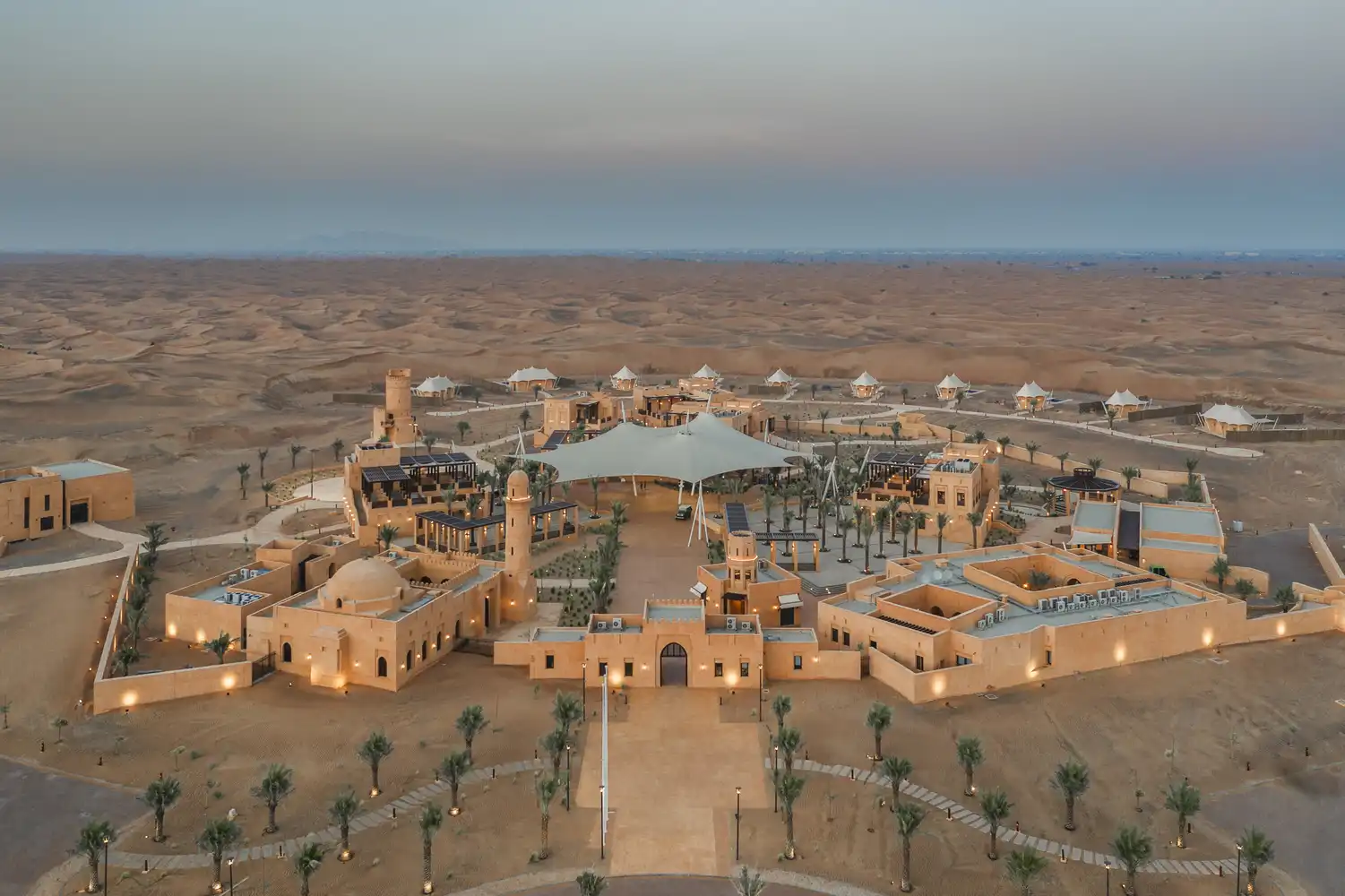
Architect/Designer: Wael Al-Masri Planners & Architects
Location: Sharjah, United Arab Emirates
Year: 2020
Mysk Al Badayer Retreat represents sustainable desert architecture because it dramatically melts into the surrounding arid landscape. With the proposal of luxury eco-retreats, the project follows all the dimensions of traditional Arabian architecture but looks through the prisms of modern sustainability concepts. The low-impact buildings blend into the dunes, using natural materials and passive cooling techniques to reduce their energy intake. Shaded courtyards, wind towers, and strategic orientations complete the design, all for addressing the severe climate of the desert. Truly reflective yet commodious, the retreat embodies the balance between tradition and environment, setting an example of sustainable development in desert regions.
Mirai House of Arches
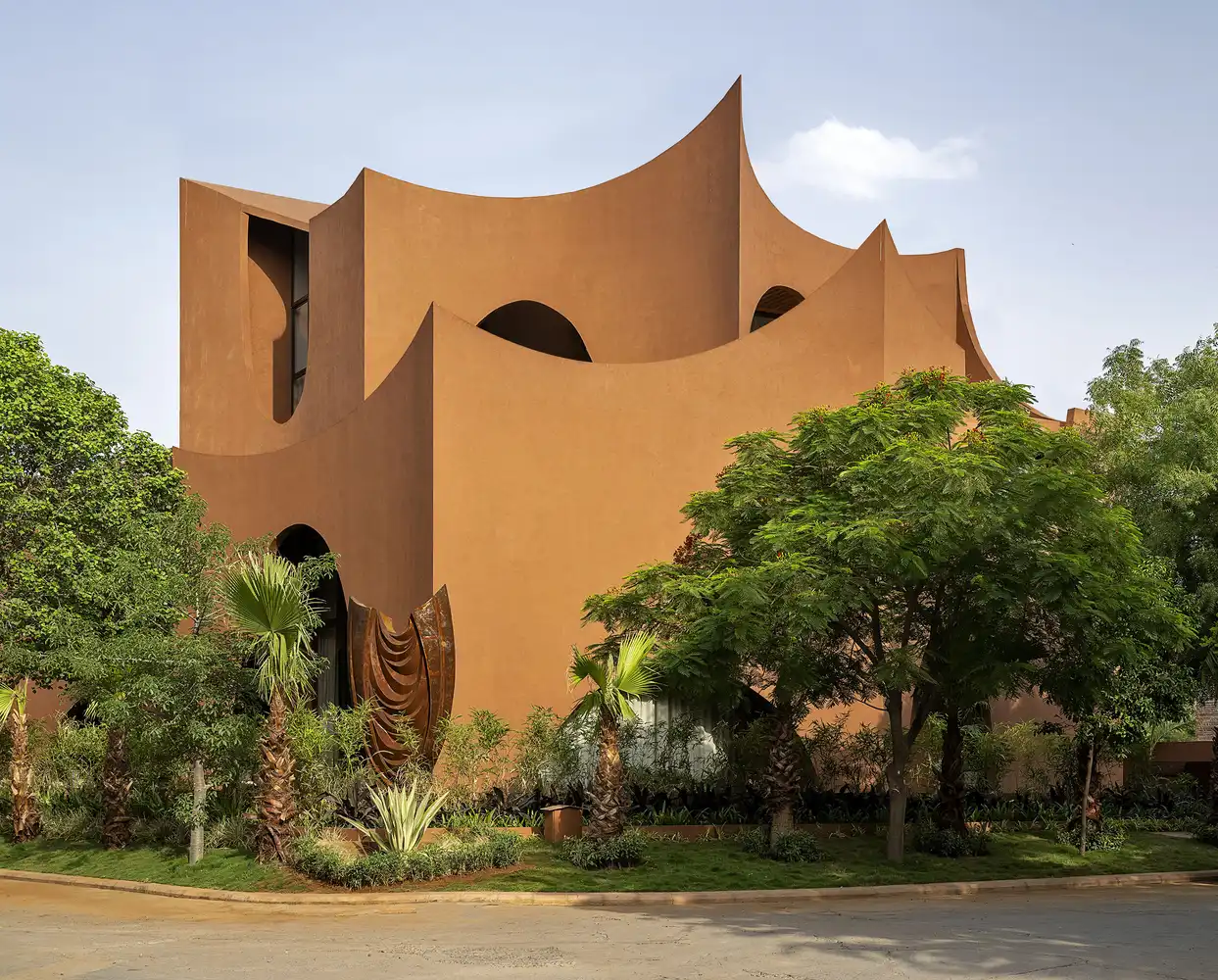
Architect/Designer: Sanjay Puri Architects
Location: Bhilwara, Rajasthan, India
Year: 2022
The Mirai House of Arches, in the Bhilwara concept of Rajasthan, is designed to withstand extreme weather. Flowing, curving arches and an internal courtyard provide shaded spaces that absorb minimal heat and enhance ventilation. By allowing natural light and rejecting direct sunlight, the wavy design ensures energy efficiency. It is made of locally sourced material bricks and concrete so that thermal comfort can be achieved. Notably, the Mirai House relates both beauty and even the most practical living conditions under one roof—conditions that nature has intended for living in one of the harshest environments on earth.
Banyan Tree AlUla Resort
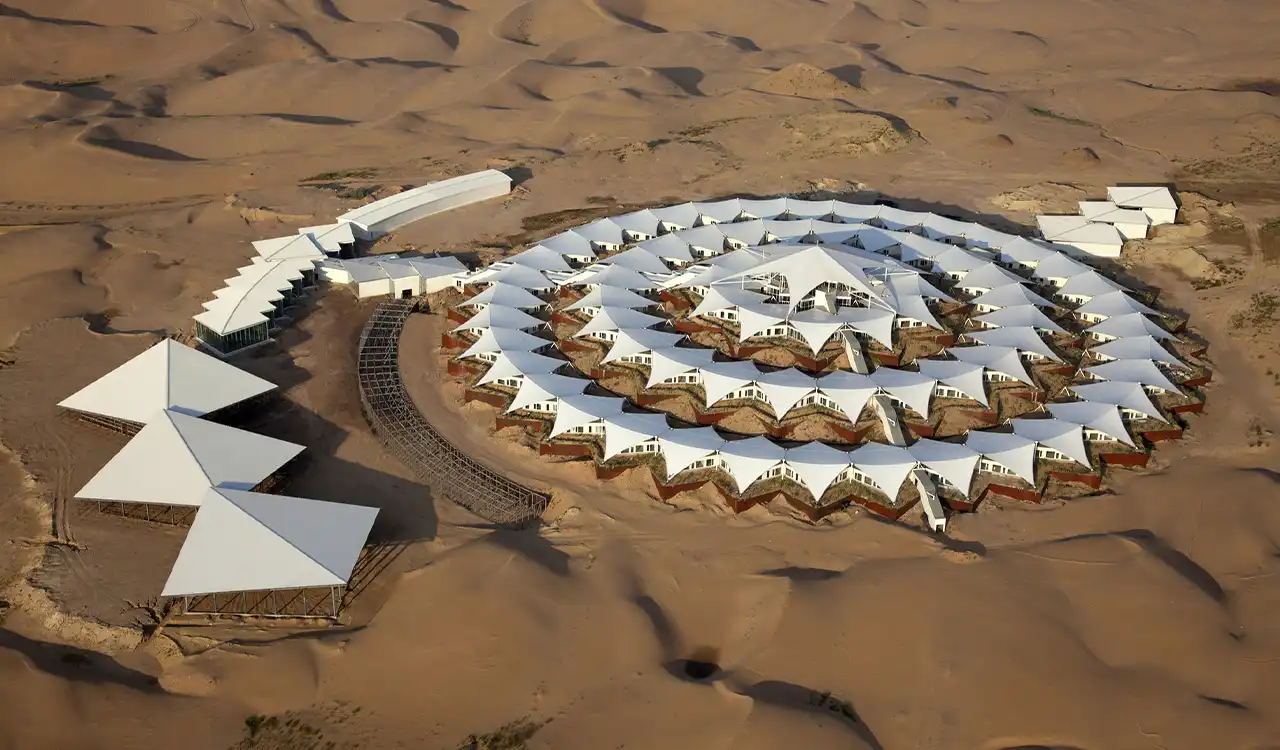
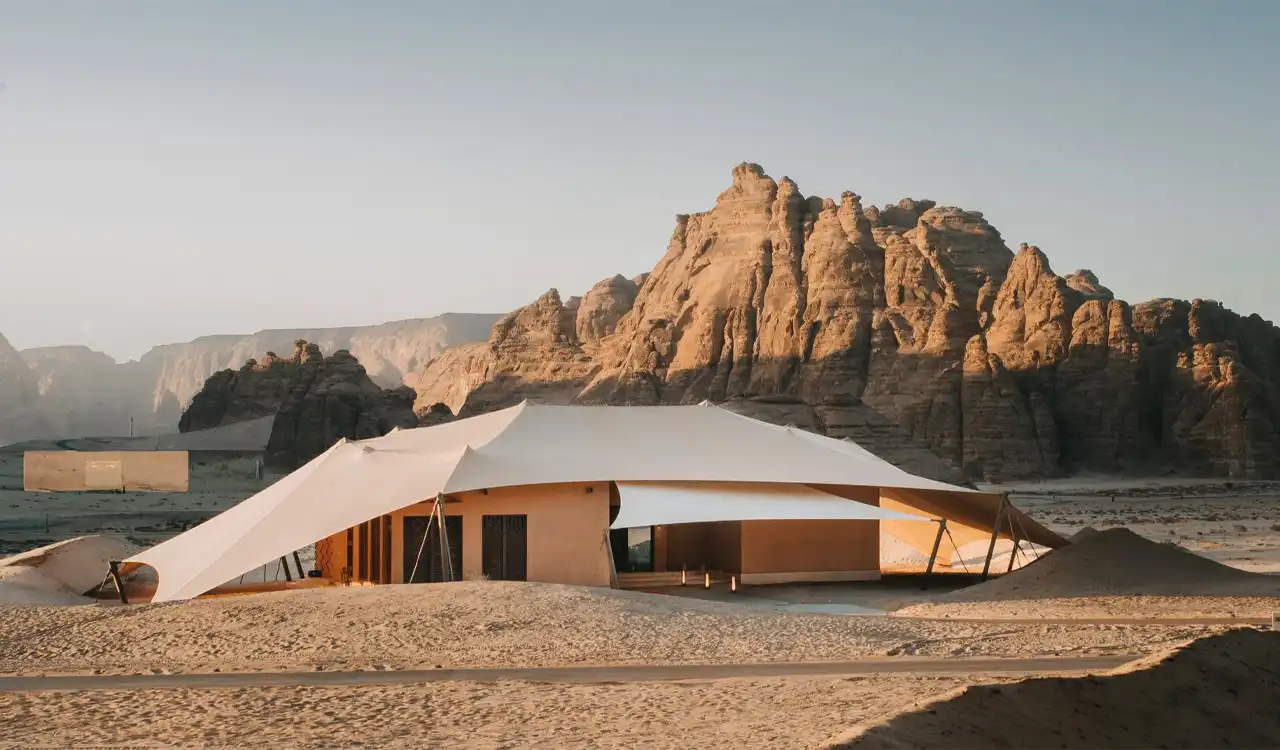
Architect/Designer: AW2 architecture & interiors
Location: Alula, Saudi Arabia
Year: 2022
Banyan Tree AlUla Resort in Ashar Valley, Saudi Arabia, represents desert architecture in its sustainable form. Built by AW² Architecture and Interiors, the resort blends well into AlUla’s sandstone cliffs and old landscapes. Low-impact design takes into account the use of modular construction to minimize the environmental disturbance accompanying its construction along with using locally sourced materials to camouflage the facility. The buildings are placed to benefit from natural shade and ventilation, thereby minimizing artificial cooling. Cultivated out of strong inspiration from the region’s heritage, the resort becomes a luxurious yet sustainable retreat, looking at how modern design can celebrate and conserve a fragile desert ecosystem.
Learn with PAACADEMY:
Check out the workshops at PAACADEMY to learn from the industry’s best experts how to use advanced parametric design tools, AI in design workflows, and computational design in architecture!
References:








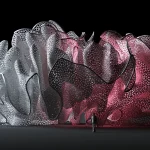









Leave a comment